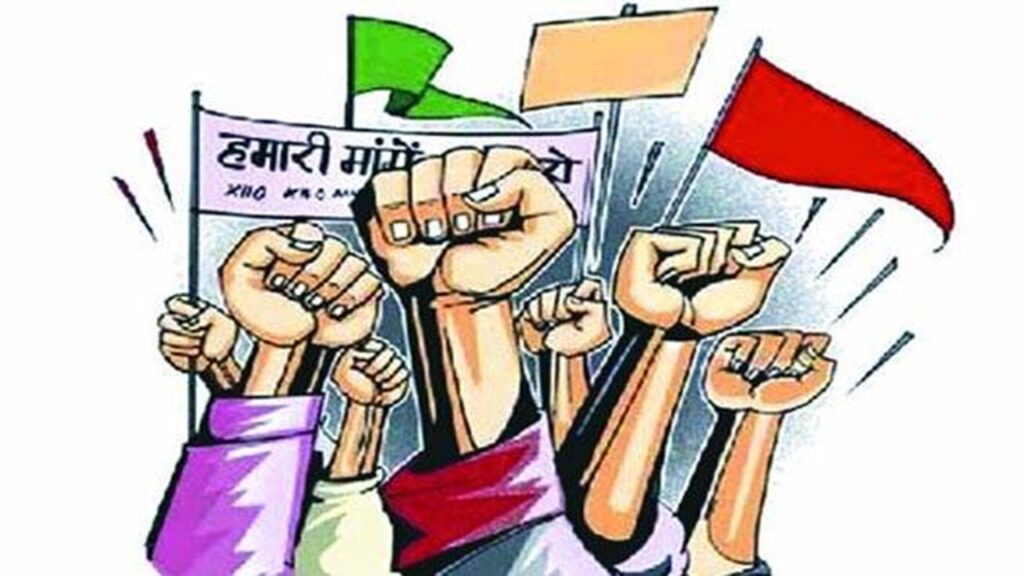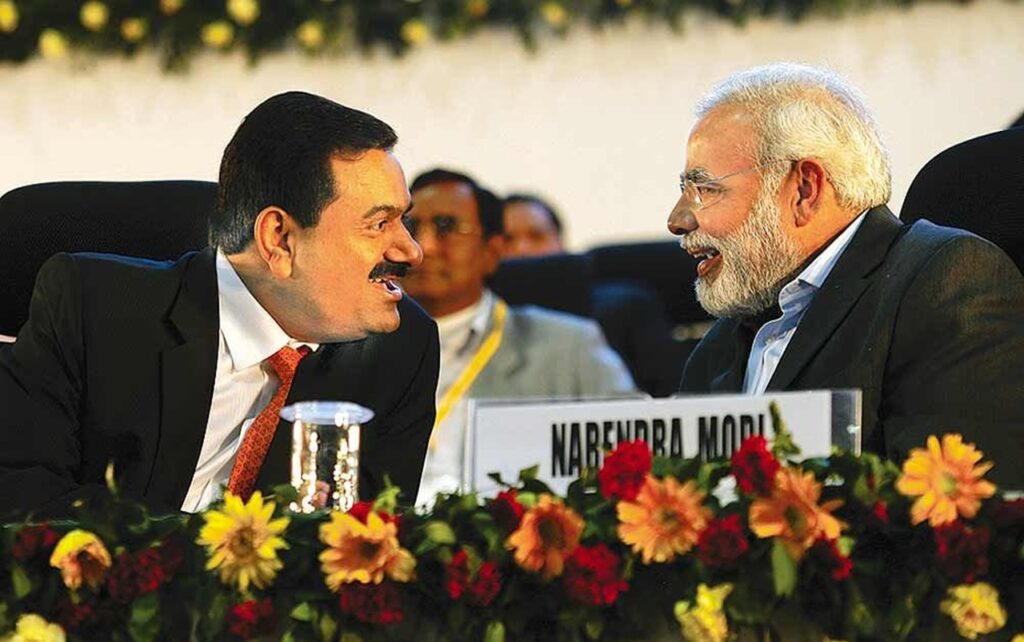May / Labour Day Special
Whose government is this : MAJDOOR OR MALIK?
The meaning of Labour Day has gradually changed over the past 75 years. But how? The “New Delhi Post” will narrate to you, how, when and in which way?
BY NARAYAN RAO
Labour Day, celebrated on May 1, has evolved significantly over the past 75 years in India. Initially a symbol of workers’ rights and solidarity, its meaning has shifted amidst economic reforms, corporate influence, and changing political priorities. The New Delhi Post explores how, when, and in what ways this transformation unfolded, questioning whether the government truly serves the workers or the elite.
THE ROOTS OF LABOUR DAY IN INDIA
Labour Day in India began on May 1, 1923, in Chennai, led by the Labour Kisan Party of Hindustan under Comrade Singaravelu Chettiar. It marked a historic moment when the red flag was first raised, symbolizing workers’ unity and their fight for an eight-hour workday. The day was a call to action against exploitation, aligning with global movements like the Haymarket Affair of 1886 in Chicago, which inspired International Workers’ Day.
HELPLESS LABOURERS WITH CONTEMPT
While every hand is a labourer, except those of the wealthy, it is a different matter that only the uneducated and powerless ones, who have been pushed to the margins and toil hard, are recognized as labourers. Nevertheless, the foundation stone of any country’s progress has always been these labourers. It goes without saying that a significant portion of this group consists of women and innocent children, who struggle daily for their livelihood. On the other hand, apart from the excesses of capitalists, governments do not hesitate to view weak and helpless labourers with contempt, pretending to care by displaying hollow promises in a messianic manner. As the pandemic’s havoc began, the government too left the labourers, who faced immense difficulties just trying to return home, to their own fate.
PARTICIPATION OF FREEDOM FIGHTERS IN THE LABOUR MOVEMENT
Mahatma Gandhi, Bhagat Singh, Subhas Chandra Bose, and Pt. Jawaharlal Nehru were also significant advocates for labourers. Notably, while leading a workers’ strike in the cotton textile industry in Ahmedabad in 1918, Gandhi secured a 35% increase in workers’ wages. This strike was against the mill owners’ withdrawal of the plague bonus in 1917.
LABOUR MOVEMENT IN BENGAL AFTER INDEPENDENCE
The leftist labour movement took on a new shape and was quite effective in the struggle for the interests of ‘proletarian’ workers, better wages, and freeing them from suffocating conditions. On November 1, 1925, leftist ‘Labour-Farmer Party’ was established in Bengal, and many branches opened across the country. As a result, perhaps for the first time in the history of labour struggles in India, after 1927, the celebration of ‘May Day’ became an integral part of raising the voice for the welfare of workers. But today, it has become difficult for the leftists in Bengal to keep labourers, farmers, and the middle class united due to their policies.
TURNING WORKERS AWAY FROM GLOBAL LEFTISM
In light of the recent elections in Europe and America, the reality of losing the traditional working-class base of global leftism comes to the forefront. The hardworking workers, who have been the solid foundation of leftist movements, have rapidly adopted a stance towards far-right populist parties or have completely withdrawn from politics. In this context, serious questions arise regarding the identity, strategy, and relevance of leftist parties like the American Democrats or the British Labour Party.

WHY THE COUNTRY’S RESOURCES TO A FEW SELECTED INDUSTRIALISTS?
International Workers’ Day, celebrated every year on May 1, is a day to honour the struggles, rights, and hard work of workers. It reminds us that the foundation of societal progress is the sweat and labour of workers. However, in today’s India, where the government makes grand statements about uplifting the poor and workers, the reality is that policies and resources are often allocated in favour of the wealthy. For example, the management or ownership of major ports (such as Mundra Port), airports (like Mumbai and Ahmedabad Airports), and other important institutions (like the privatization of Bharat Petroleum and Air India) has been handed over to large corporate houses, particularly the Adani and Ambani groups. This situation raises serious questions about the government’s priorities towards workers and the poor. Is it justifiable for a government that advocates’ collective progress for all’ to entrust the country’s resources to a few selected industrialists?
| RABINDRANATH ALSO REMAINED WITH FARMERS Rabindranath Tagore, while managing the zamindari during his lifetime, never lagged behind in providing economic and other support to labourers, farmers, and common poor people. |
Looking at the policies of the Modi government, it becomes clear that their responsibility towards labourers and the poor seems to be lacking in some way. On the occasion of International Workers’ Day, it is important to consider that when the country’s treasury and resources are being poured into the pockets of corporate entities, what is left for the workers? Changes in labour laws, such as the Labour Code 2020, have weakened workers’ rights, giving employers more power. On the other hand, groups like Adani and Ambani are not only being handed large government projects but are also receiving tax exemptions and policy support. It is ironic that the government announces schemes for workers on one hand, while on the other hand, their basic needs—employment, fair wages, and social security—remain unaddressed.
POLICIES REFLECT INDIFFERENCE TOWARDS LABOURERS AND FARMERS?
The government’s strategic efforts to exploit farmers and labourers are clearly evident. Corporations are being facilitated in land acquisition to seize the lands of tribal people and farmers, depriving them of their livelihoods. Additionally, by speaking of work for sometimes 70 and sometimes 90 hours per week, the government is completely disregarding the health and lives of labourers. These policies not only reflect indifference towards labourers and farmers but also show that the government’s focus is on serving the wealthy instead of the working class. This system is depriving rural and tribal communities of their fundamental rights, thereby deepening social and economic inequality.
NECESSARY TO RAISE OUR VOICES
First and foremost, the suicide of 120,000 workers in just three years brings the stark truth of their helplessness to light. The false assurance of becoming a balm for the crawling lives of agricultural and wage labourers has become their fate. Interestingly, despite the increasing population and the abundance of workers, the government remains oblivious. In fact, the extremely low average income is weighing heavily on the workers, bringing them to the brink. In such circumstances, the annual observance of ‘Labour Day’ will continue to mock our ‘civilization’.
| CHARACTERS OF WORKERS IN HINDI CINEMA Under its social concern, Hindi cinema has made a strong effort to depict the pain and suffering of workers with great nuance on the silver screen. Some films like Do Bigha Zamin, Mother India, Naya Daur, Paigam, Garm Hawa, Deewar, Kala Patthar, Resham Ki Dori, Mazdoor, Coolie, and Lagaan have achieved the status of milestones in the history of cinema, regarded with pride. |
WHAT SHOULD THE GOVERNMENT DO?
The government must focus on implementing and enforcing labour laws and other regulations with honesty in thought and intent to alleviate the plight of workers. On the other hand, it must be proactive in listening to workers’ complaints and resolving them. Above all, the administration must be made efficient and transparent to ensure justice for the workers.
“TUGHLAQI” THINKING OF GOVERNMENT
This Tughlaqi thinking, which is bent on erasing the very existence of workers, not only promotes social inequality but also weakens the democratic framework of the country. On World Labour Day, we must pledge to raise our voice for the protection of workers’ rights and demand that the government genuinely formulate policies in the interest of the poor and working class. Policies that ignore the poverty and struggles of workers and only care about the wealthy are neither appropriate for the country’s development nor in accordance with the principles of social justice. It is time for the government to seriously fulfil its responsibility towards workers and utilize the country’s resources for the welfare of all citizens. The question that arises is whether this is a government for the workers or a government for the rich.
THE BEGINNING OF LABOUR DAY
Even after 125 years of celebrating ‘May Day’ in memory of the bloody movement that took place in Chicago in 1886, where workers demanded an eight-hour workday after being exhausted from gruelling hours of labour in factories, the plight of labourers continues to shed tears.
UNDER THE LEADERSHIP OF DATTATREYA NARAYAN SAMANT
In 1982-83, under the leadership of the foremost trade union leader of Maharashtra, professional doctor Dutta Samant, there was an unprecedented aggressive strike of 250,000 mill workers against the then Bombay textile mill owners that lasted for 18 months. It is noteworthy that Narayan Meghaji Lokhande, who transformed the working conditions in Maharashtra’s textile industry in the 18th century, is considered the founder of trade unions in India.


